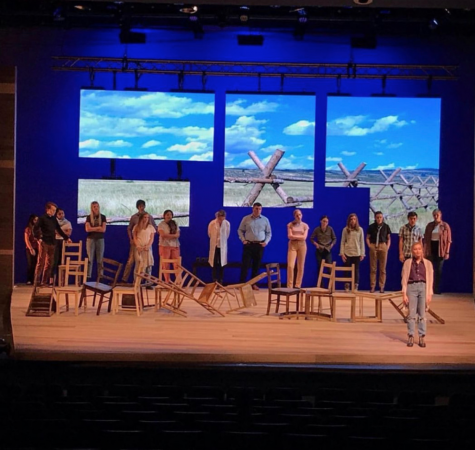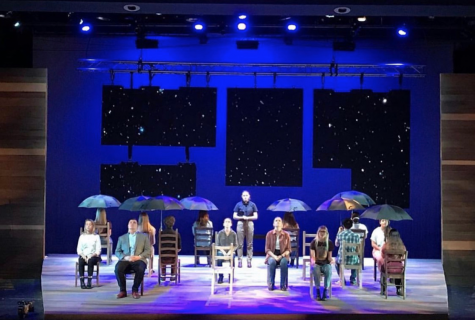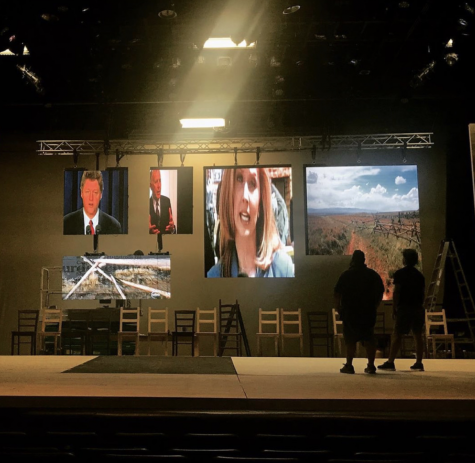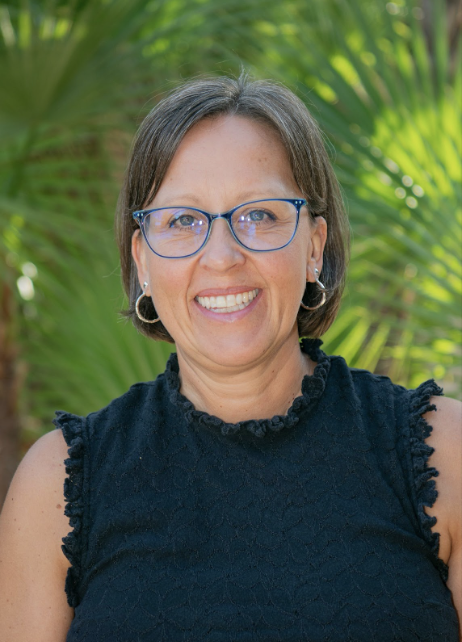Review: Laramie Project
The fall play tells the story of a tragic hate crime and its effects on a community, while also shedding light on prejudices still prevalent today
October 16, 2019
As the lights dim in the theatre, the audience is immersed in a news sensation coming to life before their eyes – a collage of poignant news reports and headlines unearthing the tragedy that occurred in Laramie, Wyoming just 21 years ago. The actors all file out from the wings, which are layered with wooden panels, and make their way to the collection of chairs that scatter the stage. Some chairs hold personal belongings, like a scarf or a jacket, and act as the only set pieces for the remainder of the show. As the characters find their place on stage, Advanced Theatre Ensemble member Nick Alexander ’20 introduces the audience to The Laramie Project.
The Laramie Project is a documentary-style play written by playwright Moises Kaufman and members of the Tectonic Theater Project in 1998. The play is based on the beating and killing of Matthew Shepard, an openly gay college student in Laramie, Wyoming. Shepard’s death quickly became a country-wide headline, sparking reporters and members of the Tectonic Theater Project to descend upon Laramie. While in Laramie, the company conducted interviews with as many townspeople as they could, collecting quotes, news reports, journal entries and courtroom transcripts. The company’s research would form the basis of The Laramie Project.
As Alexander commences the show, both he and Sofia Leche ‘20 begin introducing the vast cast of characters. Much like last year’s fall pr
oduction of Museum, each actor was responsible for playing many different characters. The milieu of characters included Derek Sokol ‘20 a well-known town limousine driver, Abby Thiel ‘20 playing a university drama teacher, Nicholas D’Andrea ‘21 playing an aspiring actor and Mercy Roberts ‘23 playing a local sheriff. As the show proceeded, the story was broken apart into various “moments”, with each moment piecing together the tragedy. The chairs were moved from time to time to reflect each “moment,” sometimes depicting an interrogation or court trial, and others a somber vigil or church service. And of course, one of the most heartbreaking symbols of the play: the fence where Matthew Shepard was found.
This show was not only a heart-moving and tear-jerking drama, but also an important messenger for ideals that still need to be spread today. While exploring themes of the impacts of activism, and the skewed and passive concept of ‘live and let live,’ this play clearly shows how important it is that these issues and prejudices against those of not only different sexual orientation but also race and religion still exists today. And this could not have been better explained than at the talk-back hosted at the end of the final show on Saturday. The company of this show was prompted with questions about their process from the audience, including the very reasonable question of how each actor was able to study and learn so many different characters. Lea Testeil ‘22 commented, saying, “We dedicated about two days of work to studying each of our characters, as it was very important to be able to accurately represent these real people.” Nate Caravano ‘22 also commented, speaking about how the cast had fun exploring each character in-depth, and playing around with physical impulses and voice quality. Much of this ability to study these characters came from the assistant director and Dramaturg Katie Fletcher ‘20’s pages of research on each and every one of these Laramie residents. And when asked what prompted him to do this show, Mr. Marshall had a meaningful, well put response, “I felt like it needed to be done again.” Congratulations to the entire cast and crew for putting on a play of such importance, and “Show Bucs”!





